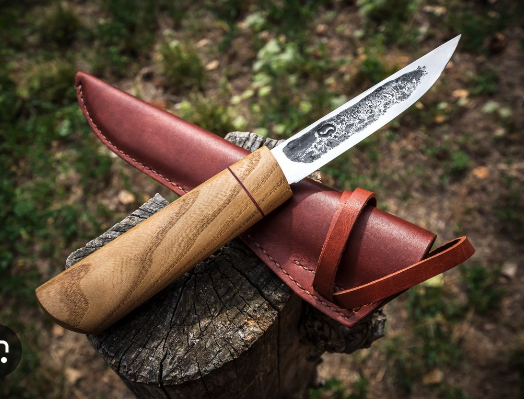Knives, with their rich cultural histories and diverse designs, are a testament to the ingenuity and craftsmanship of different civilizations. In this article, we delve into the fascinating world of Yakut and Seax knives, examining the distinctive features, historical roots, and practical applications that set them apart.
Yakut Knives:
- Cultural Heritage and Origin:
- Hailing from the Sakha Republic in Siberia, Russia, Yakut knives, also known as Yakutian knives or Yakutsk knives, have deep roots in the nomadic lifestyle of the Yakut people.
- Crafted for survival and everyday tasks, these knives embody the traditions and practical needs of a rugged environment.
- Blade Design:
- Yakut knives are characterized by a unique curved blade, typically single-edged, designed for precise slicing and cutting.
- Craftsmen often use high-carbon steel to create blades with excellent durability and edge retention.
- Handle Materials:
- Traditional materials like reindeer antler or birch bark are commonly used for Yakutian knife handles, providing a comfortable and reliable grip.
- The use of natural elements connects the knife to the environment and reflects the resourcefulness of the Yakut people.
- Applications:
- Yakut knives are versatile tools suitable for hunting, skinning, and daily chores. The curved blade design allows for efficient slicing, making them prized possessions for outdoor enthusiasts.
Seax Knives:
- Historical Significance:
- Seax knives trace their origins to Germanic tribes and have historical ties to Viking culture. The term "seax" refers to a distinct type of single-edged knife that was prevalent in early medieval Europe.
- Seax knives were multifunctional, serving as tools, weapons, and symbols of status and craftsmanship.
- Blade Design:
- Seax knives come in various blade shapes, including straight-edge, slightly curved, and even recurved designs. The blade length can range from short utility knives to longer, more formidable blades.
- The versatility in blade shapes accommodates a wide array of applications, from utility tasks to self-defense.
- Handle Materials:
- Materials used for Seax knife handles vary, with historical examples featuring wood, bone, or antler. Contemporary versions may incorporate modern materials like micarta or G-10 for enhanced durability.
- Applications:
- Seax knives historically served as everyday tools, weapons, and symbols of status. Modern interpretations are employed for outdoor activities, historical reenactments, and as collector's items.
Comparative Analysis:
- Blade Design and Functionality:
- Yakut knives are characterized by a distinct curved blade, ideal for slicing and cutting. Seax knives, on the other hand, offer a broader range of blade shapes, providing versatility for different tasks and scenarios.
- Cultural Influence:
- Yakut knives bear the cultural imprint of the Sakha people and their nomadic lifestyle, while Seax knives are deeply rooted in Germanic and Viking cultures, reflecting a different set of historical and societal influences.
- Handle Materials and Aesthetics:
- Yakut knives often feature handles made from natural materials, emphasizing a connection to nature. Seax knives, with their historical roots, showcase a blend of traditional and modern handle materials, catering to both historical accuracy and contemporary preferences.
Yakut and Seax knives, each with its unique design and cultural heritage, offer enthusiasts a glimpse into the diverse world of blades. Whether you are drawn to the curved elegance of a Yakut knife or the historical significance of a Seax, both knives stand as symbols of craftsmanship, functionality, and the enduring appeal of traditional blades.
Top of Form

